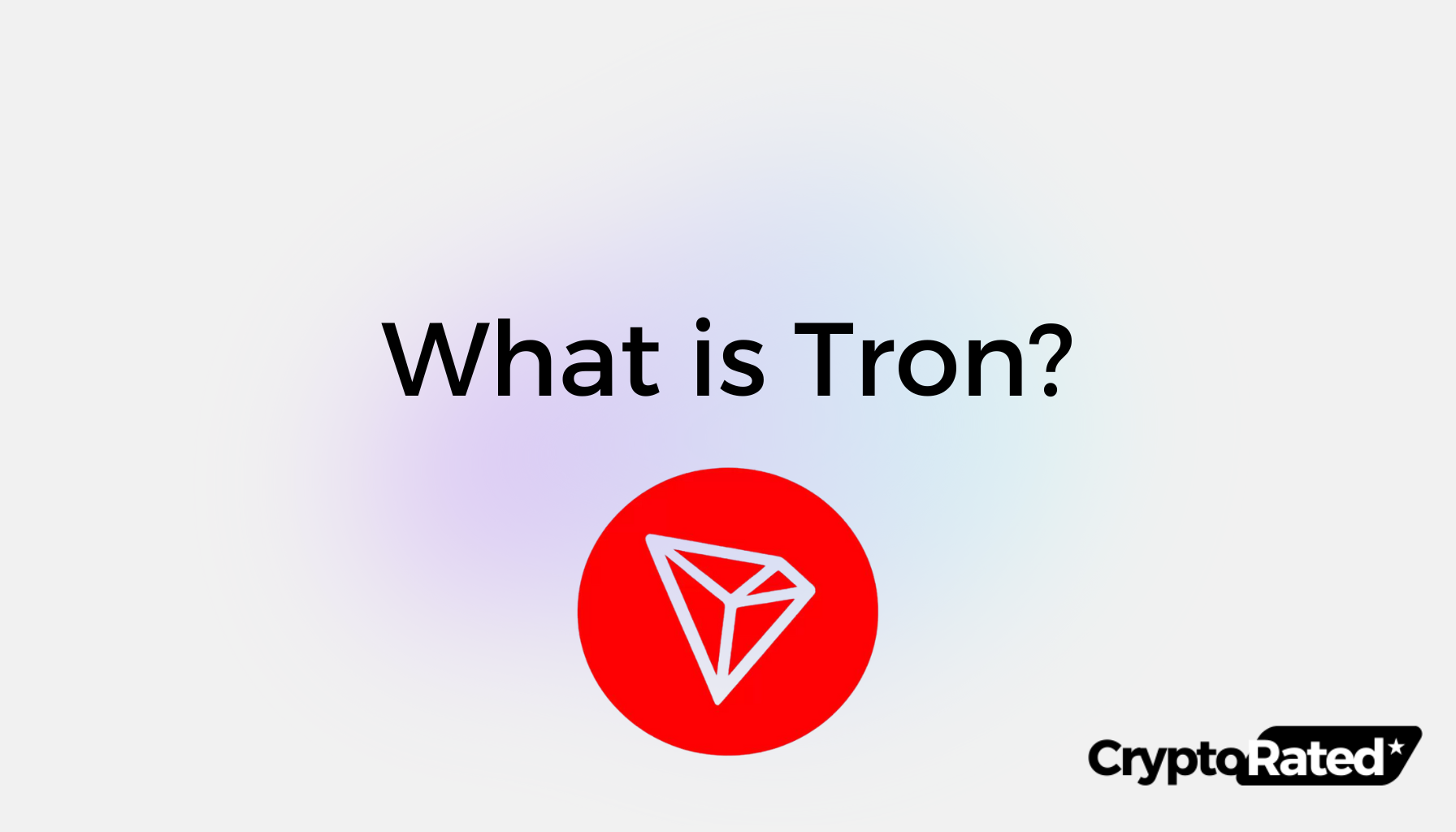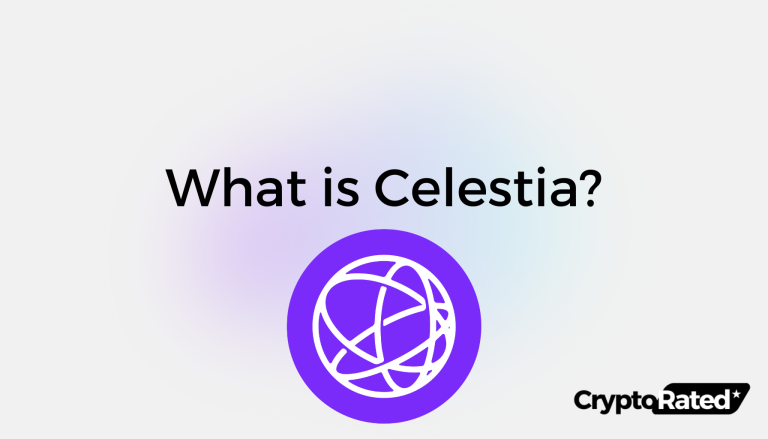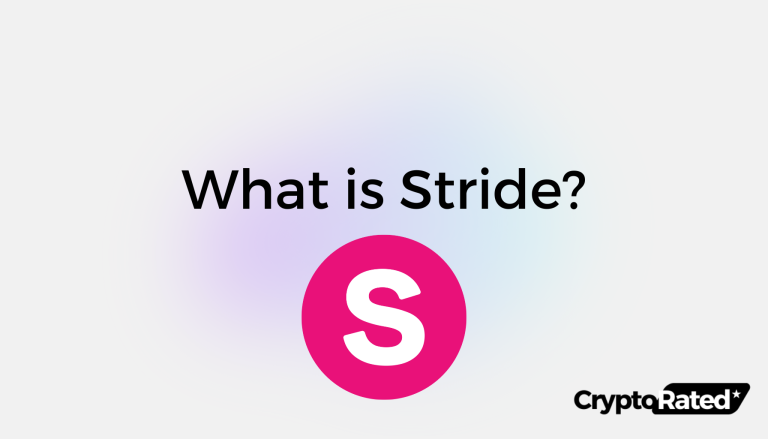
What is TRON (TRX)?
TRON (TRX) is a layer-1 blockchain that aims to decentralize the internet through the use of blockchain technology. It offers a suite of tools and infrastructure designed to enable easy and cost-effective access to decentralized applications (DApps) and smart contracts.
Key features of Tron include high throughput, scalability, and low transaction fees. These features make Tron ideal for a wide range of applications, including gaming and entertainment, decentralized finance (DeFi), and content distribution.
Key Takeaways
- Tron (TRX) is a layer-1 blockchain that aims to compete with the likes of Ethereum, Solana, and Cardano.
- According to DeFi Lama, Tron has the second-highest TVL, with over $8 billion locked in its smart contracts.
- Tron’s success has been bolstered by multiple high-profile partnerships with businesses such as Samsung and Opera.
- The TRX token has rallied by over 600% in the past five years.
What Is The History Of Tron (TRX)?
Tron’s journey began in 2017 when Justin Sun, a young entrepreneur and former Ripple employee, launched the project as an Ethereum-based token. Sun envisioned a decentralized ecosystem that would revolutionize the way individuals interacted with digital content and services.
In 2018, the Tron Foundation launched the mainnet of its own blockchain, independent of Ethereum. This move marked a significant milestone in Tron’s development, as it enabled the platform to operate independently and scale its operations.
Tron’s growth accelerated in 2019 with the launch of several key initiatives. The Tron Foundation1 partnered with major content platforms, such as the video-sharing site BitTorrent, to integrate Tron’s technology into their ecosystems.
In 2020, Tron continued to expand its reach with the launch of the Tron Virtual Machine (TVM), which enabled the development of more complex decentralized applications on the Tron network.
Additionally, Tron established its own stablecoin, USDT, pegged to the US dollar, to provide more stability and predictability for Tron-based transactions. Tron also launched its decentralized exchange (DEX), JustSwap, to facilitate peer-to-peer trading of TRON-based tokens2.
Today, Tron is a leading decentralized blockchain platform with a vibrant community of developers and users. Tron’s focus on scalability, low transaction fees, and user-friendliness has made it a popular choice for a wide range of applications, including gaming, entertainment, decentralized finance (DeFi), and content distribution.
How Does Tron Work, And What Are Its Key Features?
TRON is a blockchain system that uses a compact, Turing-complete virtual machine called the TRON Virtual Machine (TVM) to deliver a tailored blockchain system that is effective, stable, practical, safe, and scalable. The TVM-compatible tokens are implemented via smart contracts using the TRC-20 technical standard.
TRON uses a delegated proof-of-stake (DPoS) consensus mechanism3 to achieve consensus. Delegated proof-of-stake enables users to use their currencies to cast votes for different delegates.
Once elected, these delegates have the power to decide important matters that affect the entire network. Twenty-seven super representatives (SRs) validate transactions and keep track of the transaction history in the TRON ecosystem.
Every six hours, a super representative is picked, and in exchange for their services, they receive a TRX coin produced by the mechanism. Every three seconds, a new block is added to the TRON blockchain, and those who add blocks are given 32 TRX coins.
The key features of the Tron network are the following:
- High Throughput: Tron can process up to 2,700 transactions per second (TPS), making it one of the most efficient blockchains in the world. This high throughput enables Tron to handle a large volume of transactions without experiencing congestion or delays.
- Scalability: Tron’s architecture is designed to scale seamlessly as the network grows. This means that Tron can continue to handle increasing transaction volumes without compromising its performance or security.
- Low Transaction Fees: Tron’s transaction fees are incredibly low, making it an affordable platform for users and developers. This low-cost structure encourages widespread adoption and facilitates the creation of a vibrant ecosystem of DApps and services.
What Are The Primary Use Cases Of Tron (TRX)?
Tron is a base layer, which means that it offers multiple potential use cases. Just like the internet, layer-1 blockchains that offer smart contract compatibility are as useful as developers make them. Some of the most notable use cases that Tron is already being used for include the following:
- Gaming and Entertainment: Tron’s high throughput, low fees, and decentralized nature make it ideal for running gaming and entertainment applications. Developers can create innovative games and entertainment experiences on the Tron network without worrying about scalability or transaction costs.
- Decentralized Finance (DeFi): Tron has emerged as a thriving hub for DeFi applications, enabling users to borrow, lend, invest, and trade cryptocurrencies seamlessly. Tron’s DeFi ecosystem is constantly expanding, offering a wide range of financial services for users worldwide.
- Content Distribution: Tron’s decentralized nature allows for direct content distribution, bypassing traditional intermediaries and empowering content creators to retain ownership and control of their work. This decentralized approach has the potential to revolutionize the way content is created, distributed, and monetized.
How Does Tron Perform Compared To Other Layer-1 Blockchains?
TRON’s cryptocurrency ecosystem offers several benefits to its users. One of the unique features of TRON is that it allows content creators to receive payment for their efforts while still maintaining complete control of their work. Users can participate in the selection of the super representatives by holding and staking TRX4. This feature enables users to share their content with others while receiving payment for the information and content they produce.
TRON transaction fees can be as low as $0.000005, making it an attractive option for users who want to transfer funds without incurring high fees. Additionally, transactions on the TRON network are speedy, supporting up to 2000 transactions per second. In comparison, Bitcoin (BTC) supports only three to six transactions, and Ethereum (ETH) permits 25 transactions (these do vary depending on congestion).
In terms of total value locked (TVL), Tron is the second most popular chain with $8.2 billion locked, according to DeFiLama5, which puts it over $5 billion ahead of the Binance Smart Chain but over $20 billion behind Ethereum.
In summary, TRON’s cryptocurrency ecosystem offers low transaction fees, fast transactions, and unique features such as content sharing and payment for content creators. These benefits make TRON a compelling option for users looking for a decentralized digital platform with a unique cryptocurrency ecosystem.
| Feature | Tron | Ethereum | Bitcoin |
|---|---|---|---|
| TPS | Up to 2,700 | 15-45 | 7 |
| Smart Contract Compatibility | Yes | Yes | No |
| Consensus Mechanism | Delegated Proof of Stake (DPoS) | Proof of Stake (Pos) | Proof of Work (PoW) |
| Transaction Costs | Very Low | Varies depending on network congestion | High |
How has TRX traded in 2023, and what are the TRX price predictions?
According to CoinGecko, Tron (TRX) has a total supply of 88,470,374,219 and no maximum supply. However, a burn mechanism that went live earlier in 2022 means that the supply growth of TRX is limited6. As of writing, in December 2023, TRX has a market capitalization of $9.5 billion, leaving it just outside the top 10 cryptos by market cap.
Tron (TRX) has shown a long-term upward trajectory. In the past year, it has gained around 100%, and over the past five years, it’s surged by just under 700%. The surge has been accompanied by a series of high-profile partnerships with businesses7 and the introduction of the TRX burn mechanism, which some expect to tilt the supply-demand scale in favor of the latter8.
Coincodex9 has issued an optimistic TRX price prediction. They expect the crypto to continue trading higher in 2024 with a maximum price target of $0.5, representing a nearly 500% rise from its current price points. Interestingly, they don’t expect TRX to continue its rally later and instead foresee several years of flat trading.
Changelly10 expects TRX to gain another 20% before the end of 2023. In 2024, they expect it to give up some of its gains and end the year in the red by around 10%. Despite the medium-term skepticism, Changelly is bullish in the long term, with a $1 price target for 2029.
Remember that crypto prices are extremely volatile, and you should always do your own research before risking your capital.

Final Thoughts on Tron (TRX)
Tron’s success is reflected in its impressive technical metrics, partnerships and massive TVL. The network’s native token has experienced consistent price growth, racking 690% in gains over five years. Notable, TRX held its value considerably better than comparable cryptos during the 2022 bear market. Tron has solidified its position as a leading layer-1, and if its TVL continues to grow, more impressive results could be on the horizon for this project.
Frequently Asked Questions
How does the TRON blockchain work?
TRON is a blockchain-based decentralized platform that utilizes smart contracts to allow developers to build decentralized applications (DApps) on top of it. The TRON blockchain operates using a Delegated Proof of Stake (DPoS) consensus mechanism, where token holders elect super representatives to validate transactions and maintain the network.
Where can you buy Tron (TRX)?
Tron (TRX) can be traded on most major crypto exchanges, including Binance, Coinbase, Kraken, and ByBit.
functionalities
TRX is the native cryptocurrency of the TRON network. It is used to pay for transaction fees, access DApps, and incentivize content creators. TRX holders can also participate in the governance of the network by voting for super representatives and proposing changes to the protocol.
How does the TRC20 standard differ from other token standards on the TRON network?
The TRC20 standard is a technical standard used for smart contracts on the TRON blockchain. It is similar to the ERC20 standard used on the Ethereum blockchain and allows for the creation of custom tokens on the TRON network. TRC20 tokens can be used for a variety of purposes, such as incentivizing content creators and providing liquidity for decentralized exchanges.
WRITTEN
Peter Barker
Peter is an experienced crypto content writer and a DeFi enthusiast with more than 3+ years of experience in the space. Previously a journalist and news editor at a leading European news sourcing agency.




